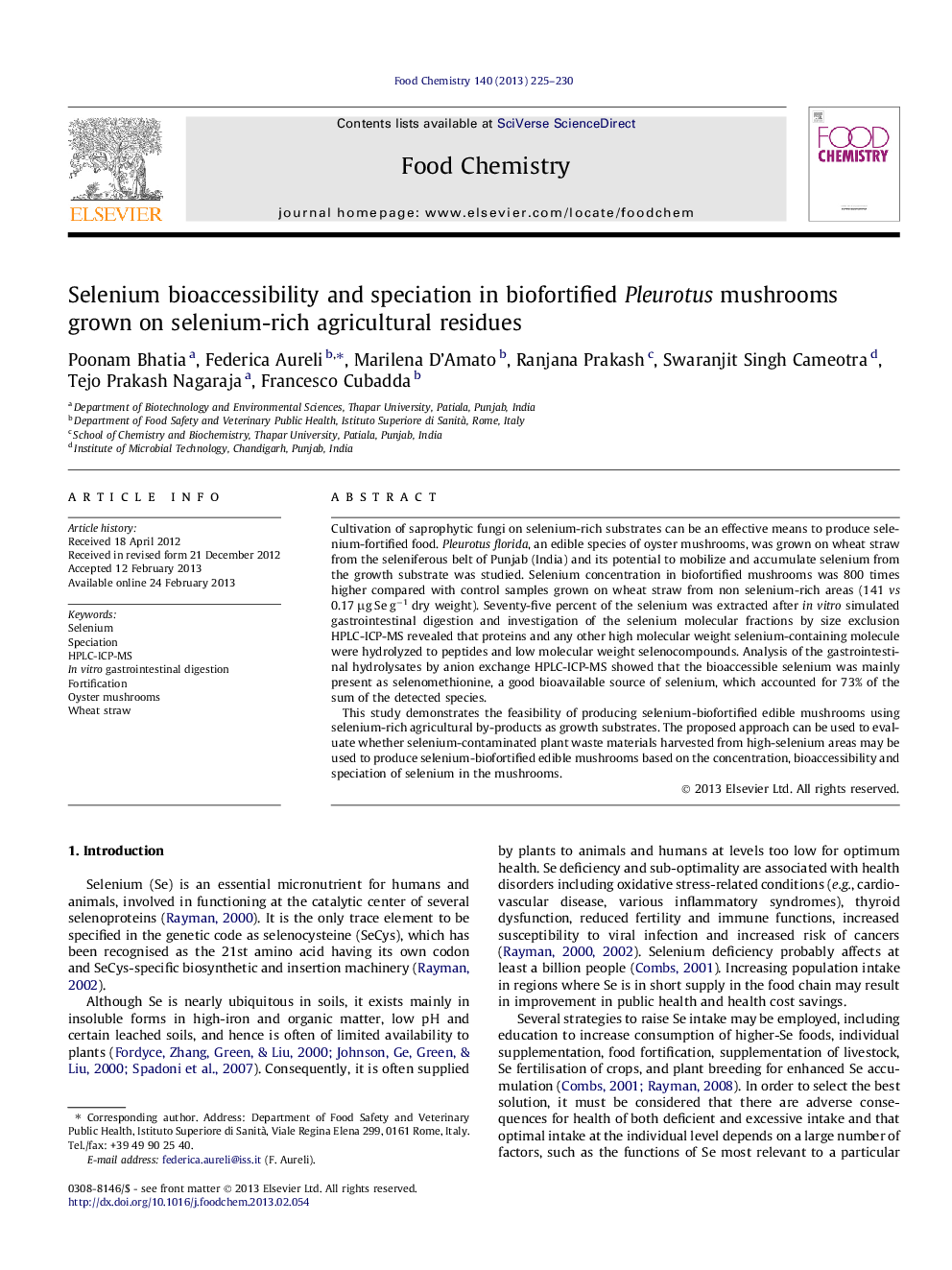| کد مقاله | کد نشریه | سال انتشار | مقاله انگلیسی | نسخه تمام متن |
|---|---|---|---|---|
| 1184901 | 1492151 | 2013 | 6 صفحه PDF | دانلود رایگان |

Cultivation of saprophytic fungi on selenium-rich substrates can be an effective means to produce selenium-fortified food. Pleurotus florida, an edible species of oyster mushrooms, was grown on wheat straw from the seleniferous belt of Punjab (India) and its potential to mobilize and accumulate selenium from the growth substrate was studied. Selenium concentration in biofortified mushrooms was 800 times higher compared with control samples grown on wheat straw from non selenium-rich areas (141 vs 0.17 μg Se g−1 dry weight). Seventy-five percent of the selenium was extracted after in vitro simulated gastrointestinal digestion and investigation of the selenium molecular fractions by size exclusion HPLC-ICP-MS revealed that proteins and any other high molecular weight selenium-containing molecule were hydrolyzed to peptides and low molecular weight selenocompounds. Analysis of the gastrointestinal hydrolysates by anion exchange HPLC-ICP-MS showed that the bioaccessible selenium was mainly present as selenomethionine, a good bioavailable source of selenium, which accounted for 73% of the sum of the detected species.This study demonstrates the feasibility of producing selenium-biofortified edible mushrooms using selenium-rich agricultural by-products as growth substrates. The proposed approach can be used to evaluate whether selenium-contaminated plant waste materials harvested from high-selenium areas may be used to produce selenium-biofortified edible mushrooms based on the concentration, bioaccessibility and speciation of selenium in the mushrooms.
► Pleurotus florida cultivated on Se-rich wheat straw efficiently accumulated Se.
► The Se in mushrooms was largely bioaccessible.
► The bioaccessible Se was mainly present as selenomethionine.
► Producing Se-biofortified mushrooms using Se-rich agricultural-residues is feasible.
Journal: Food Chemistry - Volume 140, Issues 1–2, 1–15 September 2013, Pages 225–230